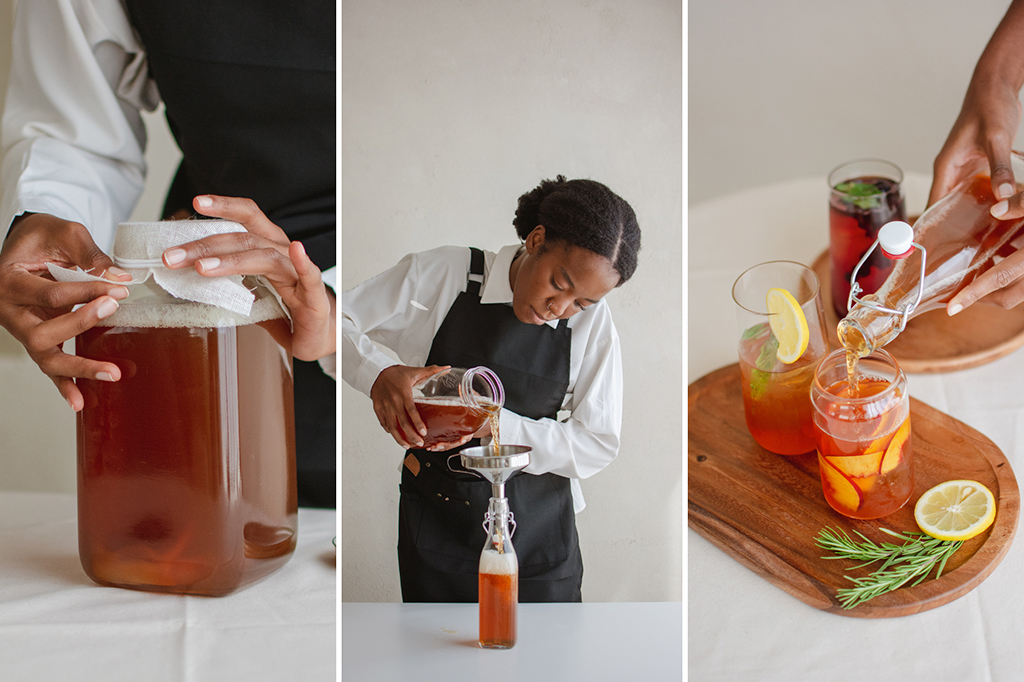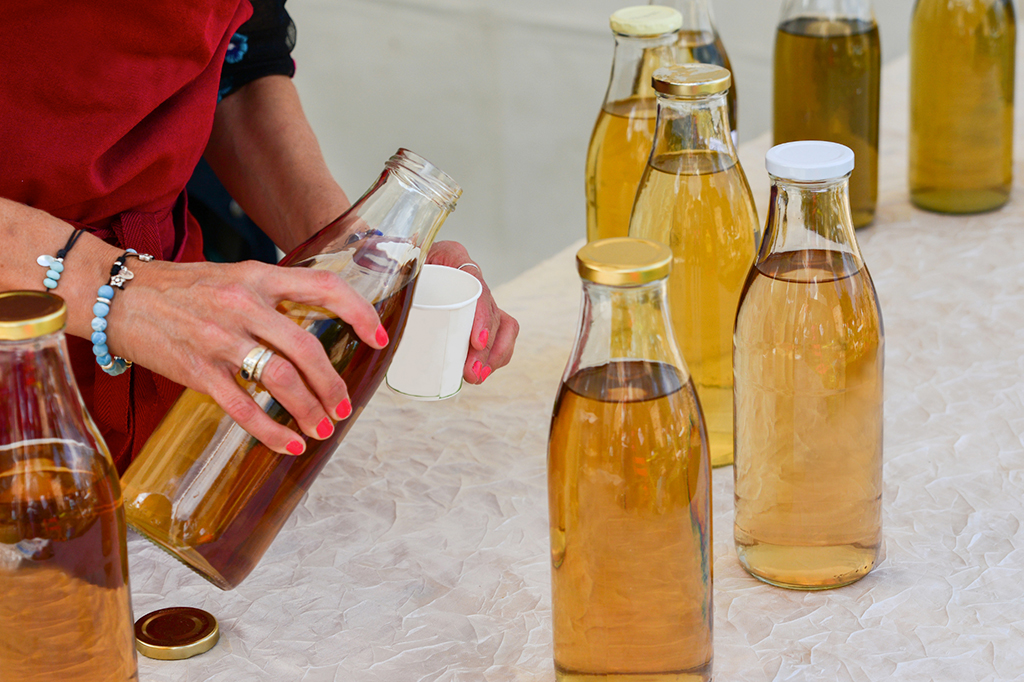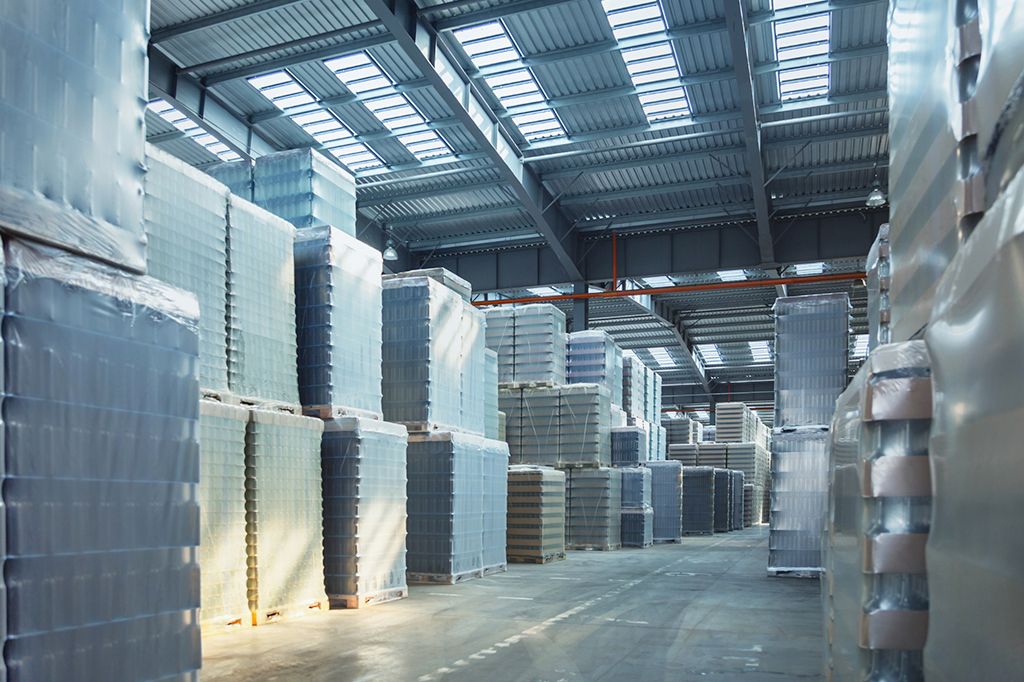Kombucha tea, a lightly effervescent and often tart beverage brewed from sweetened tea, is among the top-selling fermented beverages with worldwide market growth expected to reach almost $6.4 billion by 2028.
Prized for its refreshing taste and potential health benefits, kombucha has become a staple in health-conscious kitchens and trendy cafés. But for those curious about this bubbly brew, the question remains: how is kombucha made?
This article dives deep into the fascinating science of kombucha tea fermentation, exploring the unique ecosystem of bacteria and yeast that transforms simple tea into a tangy delight. We’ll also delve into the often-overlooked yet crucial logistics of packing and shipping this live, fermented tea beverage.
The Heart of Kombucha Fermentation
The key to kombucha’s unique flavor and potential health benefits lies in the SCOBY, a fascinating living organism. This gelatinous disc, often referred to as the “mother” or “mushroom,” is a symbiotic culture composed of specific strains of bacteria and yeast. These microorganisms work together in a delicately balanced dance, transforming sweetened tea into the delightful beverage we know as kombucha.
- The Bacteria: Acetic acid bacteria, which make up most of the SCOBY, turn the sugar in the tea into acetic acid, which is the same chemical that gives vinegar its tang.
- The Yeast: Alongside the bacteria, various yeast strains play a crucial role. They consume some of the sugar, producing alcohol. This two-stage kombucha fermentation process also creates carbon dioxide, which gives kombucha its refreshing fizz.

Image source: Canva
Factors Affecting Kombucha Flavor
The specific flavor profile of kombucha is a symphony of science and artistry. Several key factors play a role in shaping the final taste experience:
The Kombucha Container: Your choice of container plays a significant role in maintaining optimal conditions for kombucha tea fermentation and preserving the final flavor.
Glass jars are the preferred choice by many brewers due to their non-reactive nature. However, with advancements in canning technology, there are now options for aluminum cans with special liners that prevent any chemical leaching from the can into your kombucha. This innovation allows brewers to can their kombucha while still preserving its delicate flavor profile.
- Herbal Teas: The brewed tea you choose acts as the foundation for kombucha’s flavor. Black tea, with its bolder profile, stands up well to the kombucha fermentation process, resulting in a more robust drink. Green tea, with its subtler notes, lends itself to a more delicate and nuanced flavor.
- Sugar Content: The amount of sugar you add at the beginning of the kombucha process directly impacts its sweetness and acidity profile. Sugar serves as the primary food source for the SCOBY’s bacteria and yeast. After fermentation, a higher initial sugar content will result in a sweeter kombucha, as not all the sugar will be converted. Conversely, less sugar will lead to a drier and more tart kombucha.
- Fermentation Time: The longer you allow your kombucha to ferment, the more pronounced the tart and vinegary flavor will become. This is because the bacteria in the SCOBY continue to convert sugar into acetic acid throughout the kombucha-making process. Aim for a shorter fermentation time (around seven days) for a sweeter kombucha with a hint of tartness. If you prefer a more tangy kombucha, extend the fermentation period (up to 14 days or more).
- Temperature: Temperature plays a significant role in the activity of the SCOBY. Warmer temperatures (around 70-80°F) accelerate the kombucha brewing process, leading to a faster production of kombucha with a bolder flavor. Cooler temperatures (around 65°F) slow down the fermentation, resulting in a more subtle and less acidic kombucha.
- Secondary Fermentation: The magic of homemade kombucha doesn’t have to stop after the first fermentation. Secondary fermentation allows you to introduce new flavor dimensions and personalize your kombucha. This stage typically involves bottling the kombucha with fresh ingredients like fruits, herbs, or spices.

Image source: Canva
The 5 Stages of the Kombucha Fermentation Process
The kombucha-making process involves a fascinating metamorphosis, with the simple tea transforming into a complex beverage. Let’s explore the key stages:
Stage 1: Starter Tea Preparation
The first step is to make a strong black or green tea from tea bags or loose tea, with sugar added to it. This sugary solution provides the fuel for the SCOBY’s microbial residents.
Stage 2: SCOBY Introduction
The cooled tea is then transferred to a clean container and inoculated with a healthy SCOBY. A cheesecloth or breathable lid is used to cover the container, allowing for air circulation while keeping out unwanted contaminants.
Stage 3: The Fermentation
As the SCOBY works its magic, the sugar content in the tea gradually decreases. The bacteria convert the sugar into acetic acid, while the yeast produces alcohol and carbon dioxide. This initial fermentation stage typically lasts seven to 10 days, depending on temperature and desired flavor profile.
Stage 4: Bottling and Second Fermentation
After the first fermentation, the kombucha can be bottled for a secondary fermentation. This step allows for further carbonation, developing a more complex flavor profile. Some brewers may add fruit juice, fruits, herbs, or spices to create unique flavor combinations during this stage.
Stage 5: Enjoy!
Whether enjoyed after the first fermentation or after a secondary fermentation with added flavors, kombucha is a refreshing and potentially health-boosting beverage. Your product is now ready to ship and share with others!

Image source: Canva
Safely Packing and Shipping Kombucha
Kombucha, despite its growing popularity, presents unique challenges when it comes to packing and shipping. Unlike many other beverages, kombucha is a live, fermented product. This means it continues to produce small amounts of carbon dioxide and acetic acid even after bottling. Here’s why safe and secure shipping is crucial:
- Maintaining Product Integrity: Improper packaging can lead to excessive pressure buildup within the bottle, potentially causing explosions or leaks. Secure packaging ensures your kombucha arrives at its destination intact and maintains its refreshing fizz.
- Temperature Control: Temperature fluctuations can negatively impact the quality and flavor of kombucha. Maintaining a consistent temperature during shipping, especially for longer distances, is essential to preserve the kombucha’s delicate balance.
Don’t Let Logistics Slow Your Kombucha Journey
Brew Movers understands the intricacies of the kombucha process, especially packing and shipping. Our secure packaging, temperature control logistics solutions, and continental reach ensure your live beverage arrives safely and maintains its delightful fizz, no matter the distance.
Whether you’re looking for direct-to-consumer shipping solutions or are expanding your operations across the country, we can help. Contact Brew Movers today for a consultation and let’s get your kombucha on the road to success!

